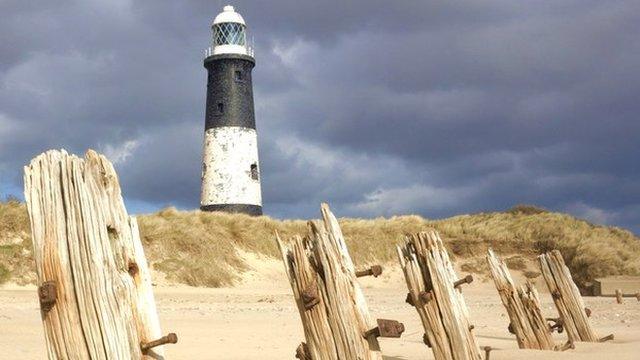Spurn, Yorkshire's 'Land's End' five years on
- Published
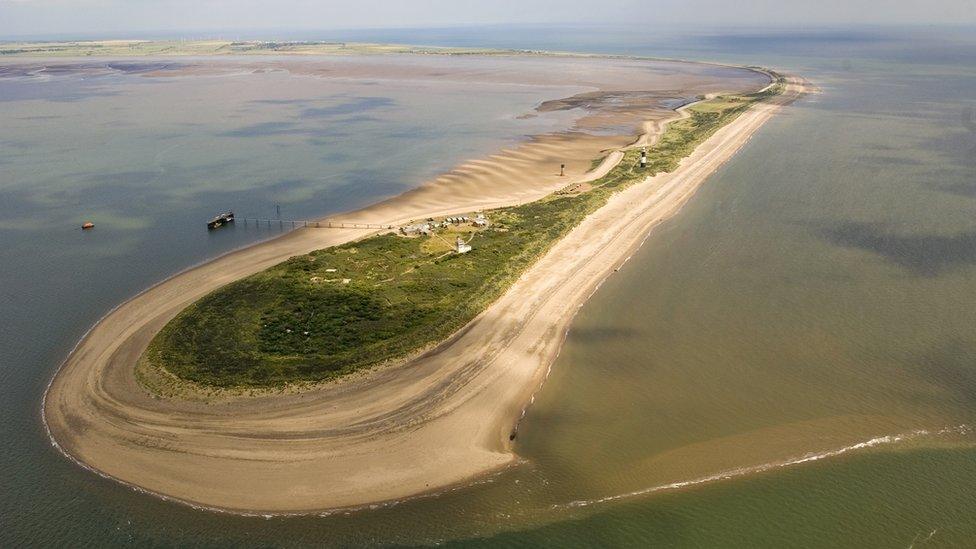
The nature reserve on Spurn has had 45,000 visitors this year
What now for Yorkshire's "Land's End", five years after a large tidal surge smashed over the thin peninsular?
Spurn Point, in East Yorkshire, juts 3.5 miles (6km) out to sea to the north of the mouth of the Humber Estuary.
The thin strip of land has a long history of military, maritime and wildlife use.
The Yorkshire Wildlife Trust (YWT), which runs its nature reserve, said: "The magic and the wilderness make it an amazing place."
Clea Grady of YWT, added: "There is nowhere else like it."
The surge inundated the nature reserve at the narrowest part of the peninsula and removed a stretch of road, in December 2013.
It was the worst since January 1953, according to the Environment Agency, leaving Spurn Point as a tidal island with access dependent on the tides.
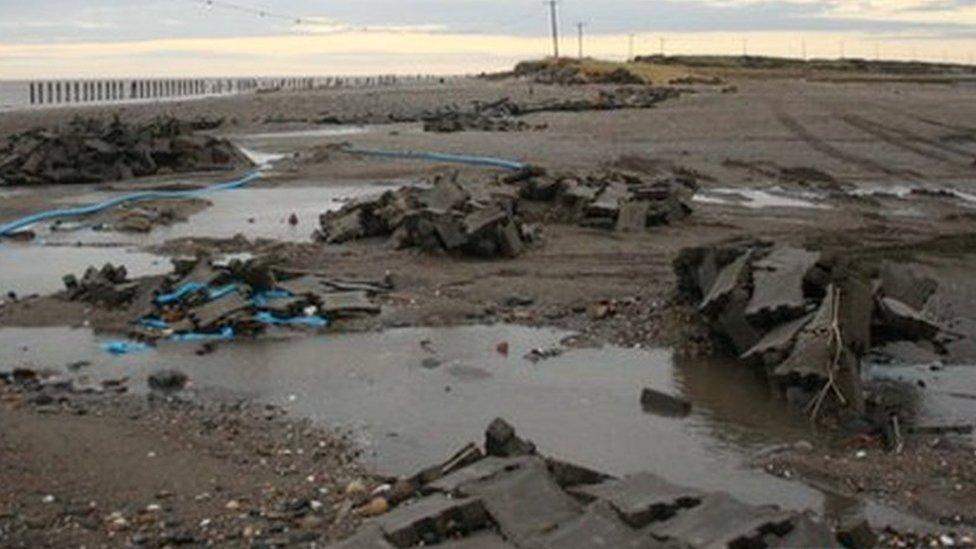
Much of the road along Spurn was washed away in the North Sea tidal surge
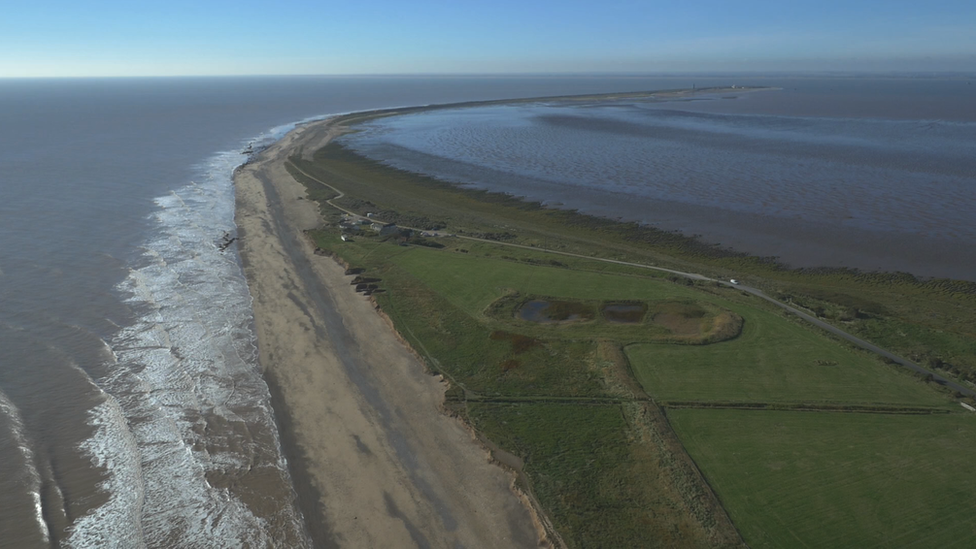
The view looking towards Spurn Point showing the area of tidal "washover"
Chris Skinner, a researcher at the Energy and Environment Institute at the University of Hull, said: "There has been a lot of debate over the future of Spurn.
"I think it will become an island sitting on hard rock, as it has been in the past."

Now its strategic importance is as a wildlife haven with a visitor centre that opened in March, and as an RNLI station.
Jon Easby, of YWT, said: "Spurn's easterly position means birds drop in to rest and we have many wading birds and protected species.
"We have to work with the tides; it's a very atmospheric place to work but the weather can be very challenging.
"It is a bit of a lost gem of East Yorkshire but is our most complex nature reserve as the sand changes daily and a bad storm moves it."

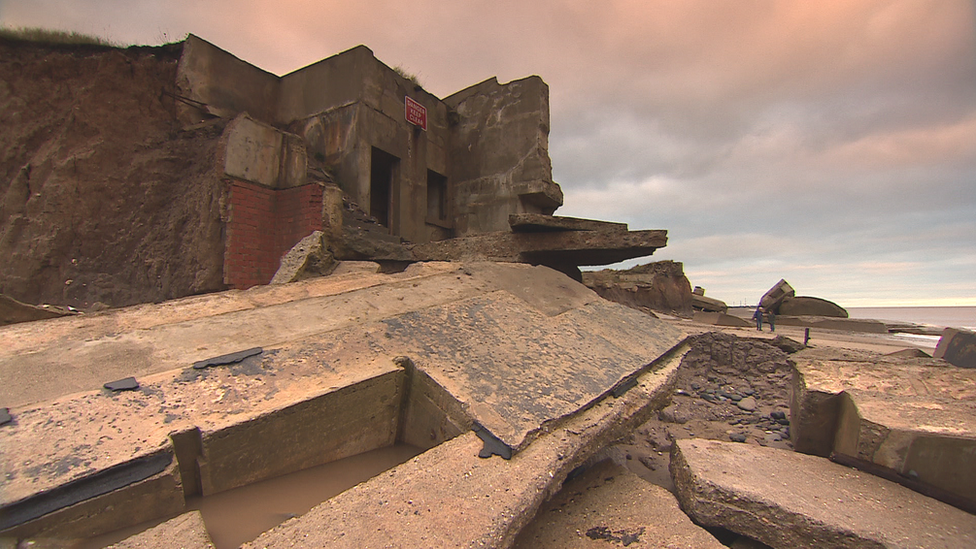
Spurn "is partly man-made as during its military use the land was very much reinforced and defended against tides", says Chris Skinner
Spurn's heritage
Maritime: The six-storey lighthouse built in the 1890s ceased operating in 1985 and is now a tourist attraction
Military: Spurn was garrisoned from 1805 during the Napoleonic Wars until it was finally abandoned by the military in the late 1950s. At its height there were about 1,500 personnel on the narrow spit and in nearby Kilnsea
Life-saving: An RNLI lifeboat station opened in 1819 that is still operational but the crew's families moved off Spurn in 2012
Natural: Spurn boasts a 327-hectare nature reserve of marram grass-topped dunes, mud and saltmarsh, with wildfowl and wading birds, Hebridean sheep, insects and wildflowers
Sources: BBC and YWT

- Published20 March 2018

- Published29 January 2018

- Published28 February 2014
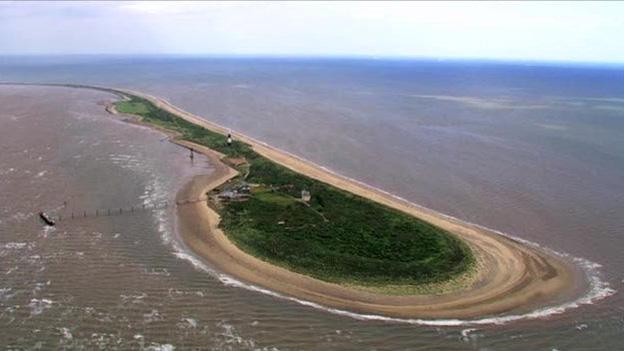
- Published10 December 2013
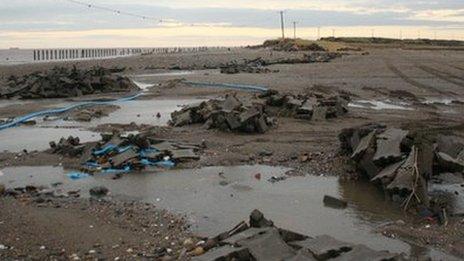
- Published18 September 2013
